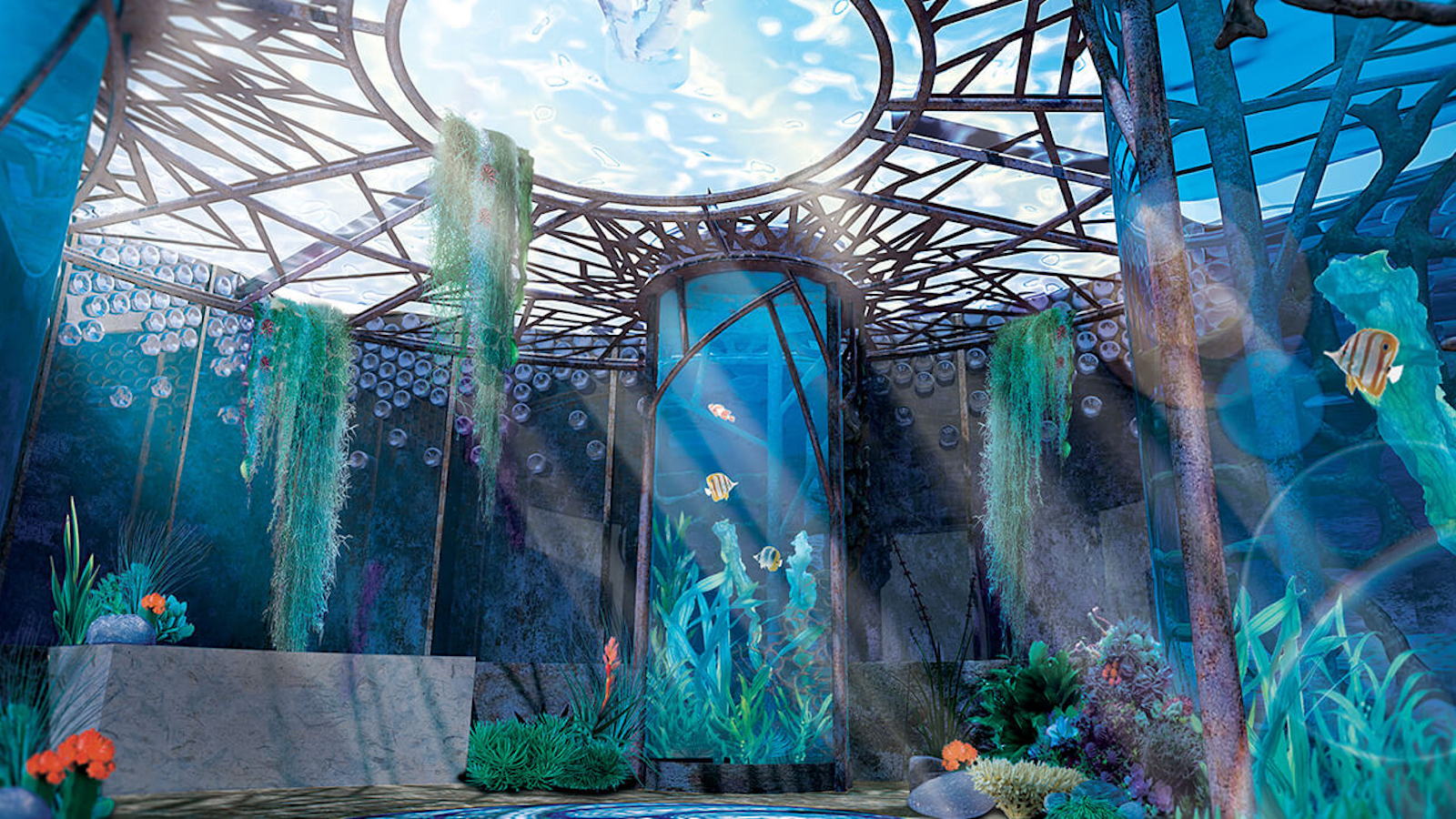We have recently covered the threat plastic poses to wildlife and even to humans themselves. Especially as a source of irreparable pollution in a form of microscopic particles that enter our bodies, or as an enormous cluster that makes up an entire island in the size of Texas consisting of just plastic waste. We could go on for a while, but maybe you can just read more about the disastrous effects of plastic here.
Fortunately, there are small steps being taken to make the issue better, and although banning single-use plastic, like straws, might seem like a drop in the ocean, more and more brands are jumping on the ship to stop the plastic plague from spreading.
Enter London-based design agency Pearlfisher—which you might know from our articles about an ingenious pizza-box or non-alcoholic spirt, Seedlip—and their invitation to explore The Pearflisher Garden. This unique location has been designed to point out the threat of plastic waste to the world’s largest ‘garden’ – the waters and the seabed of our oceans.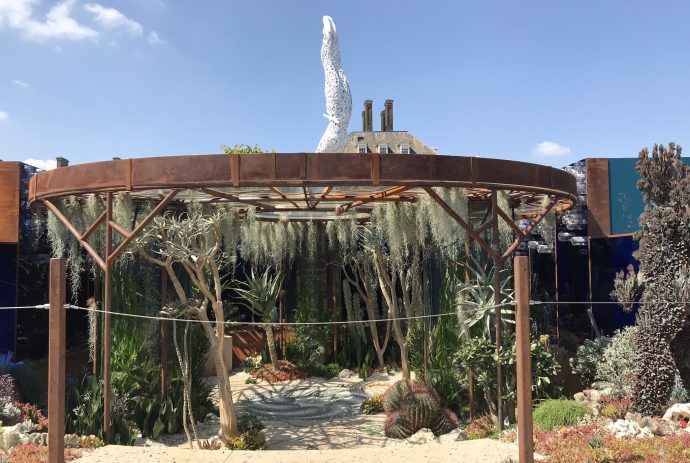
According to the future-focused design company the unusual place aims to showcase “the dichotomy of the beauty and destruction present in our oceans” and also to become a call to action for governments, designers, brands and businesses to “create sustainable life cycles for all packaging and products of the future and for people to rethink the impact of their own consumption.” The garden itself was featured as one of the 2018 Show gardens at the annual and prestigious RHS Chelsea Flower Show.
The concept and design of The Pearlfisher Garden come from the resourceful brains of Pearlfisher Founding Creative Partner, Karen Welman. She and the Pearlfisher team have worked with RHS multi-gold and silver medal award-winner, John Warland, and world-renowned underwater sculptor, Jason deCaires Taylor. Together they created a design that celebrates the beauty of the vast underwater flora with a series of aquatic tanks that host various ocean plants while surrounding the garden’s central figure: a three-dimensional pearl diver (or Ama in Japanese) made by Taylor! The 3D printed sculpture represents mankind’s symbolic relationship with the ocean and is made of recycled PLA plastic.
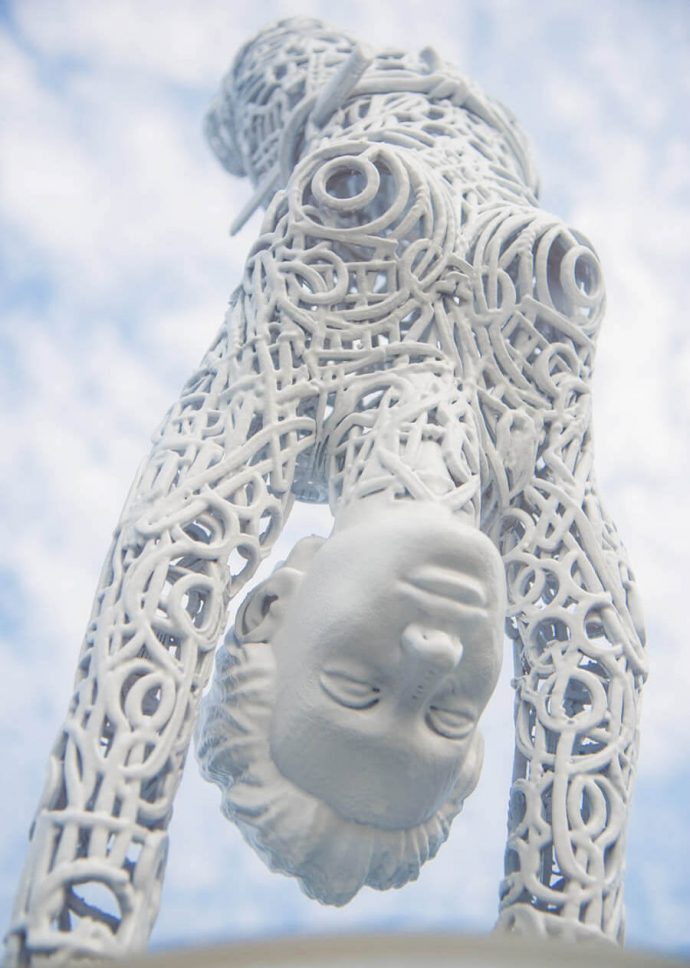
The planting is dominated by cacti and succulents which imitate the structure and form of an underwater coral. Suspended Tillandsia adds an algae effect, its form reminiscent of a plant suspended in fluid. This extraordinary combination of specimen creatively juxtaposes the beauty and fragility with possible desertification of the oceans. The feeling of urgency is then accentuated against a backdrop of natural textures, materials and aging effects that complete the world’s most precious garden. Yes, there are live fish swimming around in the tanks to remind us of the threat that plastics and the associated toxins pose to the whole food chain.
And if this weren’t enough the surrounding walls incorporate 500 recycled plastic water bottles which represent a staggering amount of plastic packaging thrown into the salty waters every 2.5 seconds.
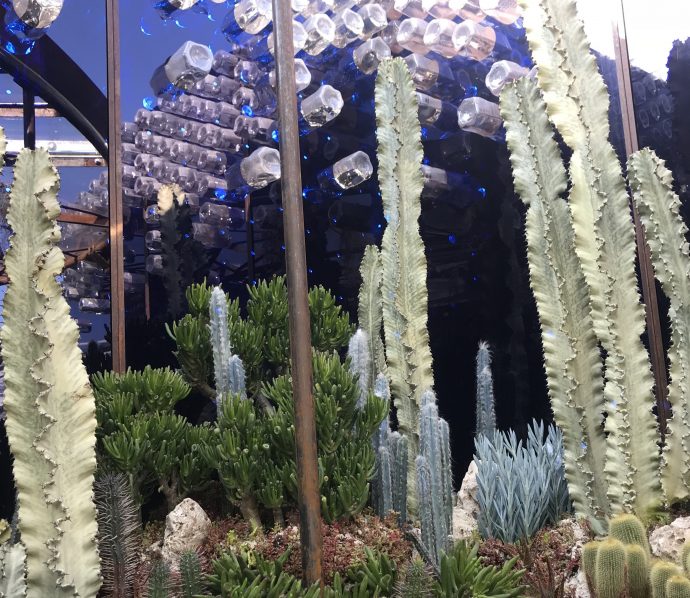
Karen Welman also shares light on the garden design and where the firm has drawn inspiration: “As designers, we saw an opportunity, through design to creatively highlight one of the world’s most pressing problems and make the change. ‘The Pearlfisher Garden’ is a window to the world of our unseen treasures and also highlights the irrevocable impact of plastic waste. All designers, regardless of expertise have a responsibility to design sustainably, and we can solve problems through design innovation and smart creative thinking.”
The company’s vision was to present The Pearlfisher Garden as “a quiet and static space that reconciles beauty and tranquillity with a dynamic and thought-provoking message,” added Welman. The team at Pearfisher hopes that their efforts will inspire and educate not only the customers but also their clients and will provide a lasting visual legacy for future generations to come.
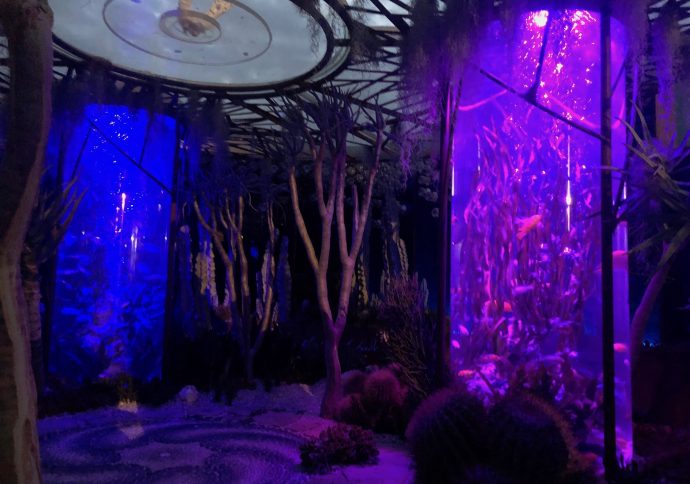
And it wouldn’t be Pearlifisher if they hadn’t injected their designing skill and craft into promoting the garden experience. Set the scene for a stunning leaflet that uses negative space to hint at the idea of reduction and loss. Watch how the bottle cut-out in the sleeve subtly references to plastic objects in our oceans. Then notice how through the bottle you can see a plant which signifies the threat of all the marine plants being destroyed with only a plastic wasteland to be left behind.
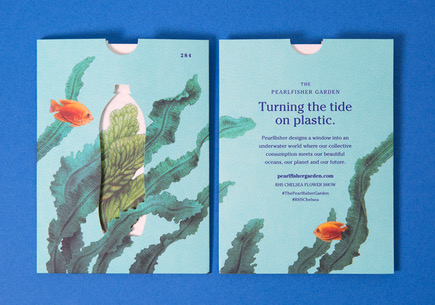
These beautiful plant illustrations were created using watercolour paints by London-based artist, Marina Kiselova. They highlight the hereinbefore-mentioned combination of unusual and exotic cacti and succulents. The leaflets were designed in a really stunning way in the hope that their owners will keep them forever and save them as a vivid memory of their visit to the Show, The Pearlfisher Garden and, most importantly, the Garden’s inspiration of plastic pollution in our oceans.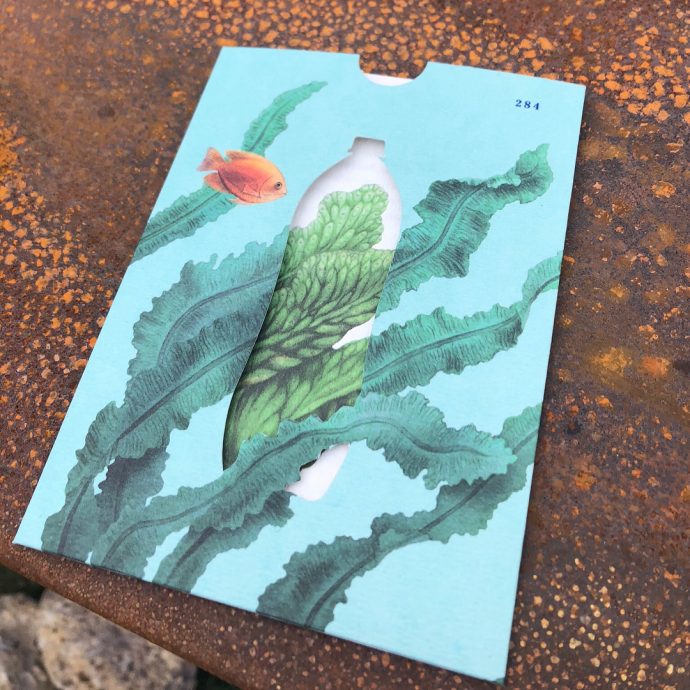
The London-based design company also paid attention to the lightweight design of the leaflets, so their majority at the RHS Chelsea Flower Show was kept unnecessarily bulky and the studio kept theirs lightweight and the information concise as to not use too much paper or printing. We can only wish that people would pay so much detail and attention to the environment as Pearlifisher did while creating the Garden and the leaflets. There might have been one less plastic problem to worry about…

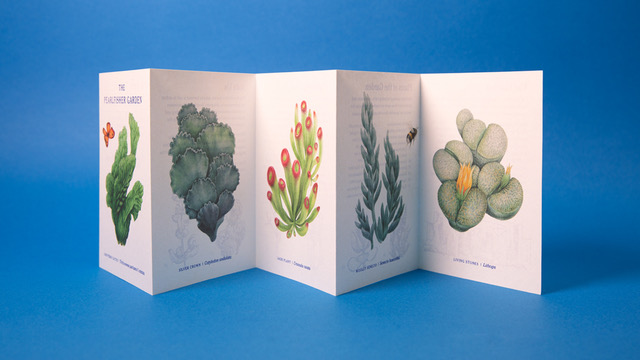
Credits:
Garden Design: Karen Welman, Founding Creative Partner, Pearlfisher
Garden Design: Jonathan Ford, Founding Creative Partner, Pearlfisher
Garden Design: Miles Wagner, Pearlfisher
Garden Design: John Warland, Senseless Acts of Beauty
Coral Man Sculpture: Jason deCaires Taylor
